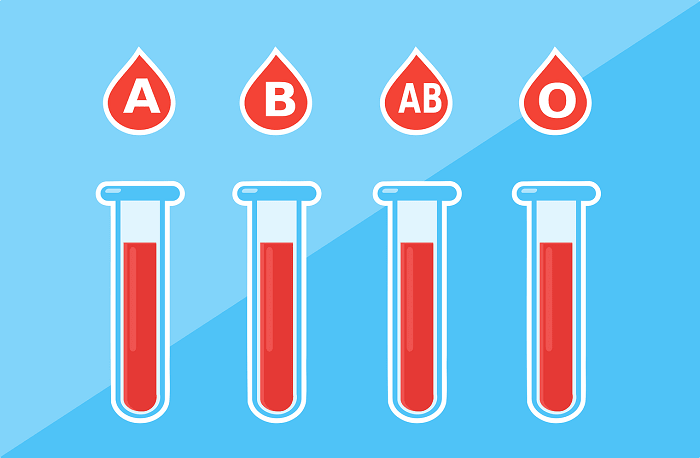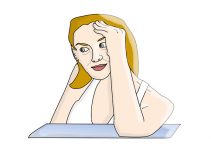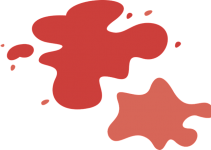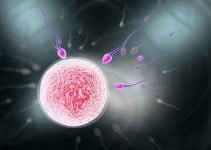
Image: Pixabay.com
Blood may look the same to the naked eye, but it is not the same for everyone. While it performs the same duties on each person – circulating the body to deliver oxygen and nutrition and removing waste – there are elements that separate one from the other.
There are different blood group systems, with the ABO group being the most common.
Each type is determined by the glycoprotein coating on red blood cells.
If you’re looking to calculate the blood type of a child or parents use our calculators below.
Below that you’ll find much more information about each blood type and how the blood type is determined.
Navigation:
- Blood Type Calculators
- Blood Types
- Importance of Blood Typing
- The Rh Factor
- Blood Type Determination
- Predicting Blood Type Using a Punnett Square
Blood Type Calculators
Child Blood Type Calculator
Parent Blood Type Calculator
Blood Types
Blood is composed of red blood cells, white blood cells, and platelets (which are found in a liquid called plasma). Your blood type is determined by the antigens present in the blood.
Antibodies are found in plasma and are part of the natural defenses of your body. They are able to recognize foreign substances, like germs, and alert your immune system, which then takes care of the threat.
Antigens, on the other hand, are found on the surface of red blood cells. Blood type is determined by the presence or absence of the A or B antigen on the surface of said cells. In the ABO blood group system, blood is divided into four groups:
- A – only the A antigen is found on red cells (the B antibody is in the plasma)
- B – only the B antigen is found on red cells (the A antibody is in the plasma)
- AB – both the A and B antigens are found on red cells but neither A or B antibody are in the plasma
- O – neither A or B antigens are found on red cells but both A and B antibody in the plasma
Importance of Blood Typing
It is important to determine blood type in case you will need a blood transfusion or are planning to donate blood. It helps to know what blood group you belong to because receiving incompatible blood can result in complications.
The Rh Factor
Apart from the A and B antigens, there is a third one called the Rh factor. This can be present (denoted by +) or absent (denoted by –).
Rhesus (Rh) factor is an inherited protein found on the surface of red blood cells. If your blood doesn’t have it, you’re Rh negative. On the other hand, you’re Rh positive if it is in your blood.
Taking this into account, you can belong to one of eight blood groups:
- A+
- A-
- B+
- B-
- O+
- O-
- AB+
- AB-
Blood Type Determination
Your blood type is inherited. Each biological parent passes down one of two ABO genes, with A and B being dominant and O being recessive (each copy of gene is called an Allele).. Here’s a chart to illustrate the different combinations:
| Allele #1 | Allele #2 | ||
|---|---|---|---|
| A | B | O | |
| A | AA | AB | AO |
| B | BA | BB | BO |
| O | OA | OB | OO |
Taking into account the dominant and recessive genes, you can get the following combinations:
- A + A = A
- A + O = A
- A + B = AB
- B + B = B
- B + O = B
- O + O = O
Let’s put this into some examples so it could be better understood. For instance, both parents have type A blood. Based on the above, they could either pass the A allele or the O allele to their child. An AA, AO, or OA combination from both parent results in blood type A while an OO combination results in blood Type O.
Basically, if both parents are type A, they can either have a child with type A blood or type O blood, with the former being a far greater chance.
Let’s say both parents are of type O blood. Well, this is the part that’s very easy to determine because two Os always results in an O.
A mother can have any of the four blood types and so does the father. This means that there are 16 possible combinations. Here’s a chart to illustrate those combinations:
| Mother | Father | |||
|---|---|---|---|---|
| A | B | AB | O | |
| A | A/O | A/B/AB/O | A/B/AB | A/O |
| B | A/B/AB/O | B/O | A/B/AB | B/O |
| AB | A/B/AB | A/B/AB | A/B/AB | A/B |
| 0 | A/O | B/O | A/B | O |
Blood type determination is usually done through a test. However, if you want to do it manually, there’s a method called the Punnett Square. It is a diagram that is used for predicting the outcome of a cross or breeding experiment.
Essentially, it’s not just used for predicting blood type; it can also be used by expectant mothers who want to know the possibility of their child having blue or brown eyes.
Predicting Blood Type Using a Punnett Square
Suppose a mother has type O blood while the father has type AB blood. What are the blood type possibilities of their child? One of the tables above shows the possibilities, but you can try it out manually using a Punnett Square. Here’s how to draw it:
- 1. Start by listing the possible alleles of the father on the left-hand side. In this case, it’s A and B.
- 2. Place all the possible alleles of the mother on the top row. Since she’s type O, the only possible combination is O alleles.
- 3. Draw rows corresponding to the number of alleles on the father’s column (the left-hand side).
- 4. Draw columns corresponding to the number of possible alleles from the mother.
- 5. List down the possible blood types. Your table should look like this:
| O | O | |
|---|---|---|
| A | AO | AO |
| B | BO | BO |
6. Count the number of possible combinations. You have four possible combinations for this example.
7. Add up each possible combination. For this example, you have the following:
- AO = 2
- BO = 2
8. Calculate the percentage for each blood type. Take the number of squares occupied by each combination and divide it by the total number of squares. You will have the following result for this example:
- AO = 2/4 = 50% chance
- BO = 2/4 = 50% chance
Taking into account the dominant and recessive genes, there’s a 50% that a child of a type O mother and type AB father will have type A blood and 50% chance of type B blood.
This example was rather simple but you can try out different possibilities of your own. While it won’t accurately predict blood type, it can give hints.



